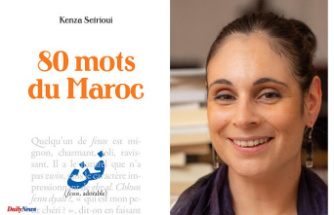Teeth discolor over the years. How do they become white again? Here is the overview - from home remedies such as strawberry puree and coconut oil to professional treatment.
Whitening discolored teeth - there are different methods for this. Home remedies such as baking powder, oil or citric acid should make the teeth shine again. The same applies to bleaching strips from the drugstore or treatment in a beauty salon or dental practice. An overview.
Brushing with salt, lemon juice or baking soda, drawing oil or rubbing sage leaves over your teeth - numerous tips for whiter teeth are circulating on internet forums and YouTube videos. The advantage: the funds are cheap - and you have them at home.
But do they really bring the hoped-for benefit? Only a few of them and only to a limited extent. Many are even harmful, says Prof. Christoph Benz, President of the German Dental Association (BZÄK). Baking powder has a slightly whitening effect. But many overdo it and damage the tooth enamel through abrasion. "And what's gone is gone."
The dentist strongly advises against acidic substances such as lemons or pureed strawberries: "You can damage your teeth relatively quickly with them." Because the acid attacks the tooth enamel directly. In addition, there is the fructose, which is metabolized by caries bacteria into acid, which can then also destroy the tooth enamel, warns Benz.
Coconut oil pulling is currently a trend, says Dirk Kropp, managing director of the Pro Dente initiative. You hold a spoonful of coconut oil in your mouth for a few minutes before spitting it out. According to Kropp, a lightening effect has not been proven. After all: "You can't do much wrong with oil either."
Products like these contain hydrogen peroxide, which whitens teeth. Important to know: The EU Cosmetics Regulation only allows a concentration of up to 0.1 percent for such over-the-counter products. Their effect is therefore small. "The tooth color will not change significantly," says dentist Benz. The follow-up treatment of a professional bleaching is possible in this way.
Important for bleaching products: You should use them as the manufacturer says on the packaging. Due to the low concentration of hydrogen peroxide, direct damage to the teeth is not to be expected, says Dirk Kropp. However, if you use the product longer than specified, this can be different.
Kropp sees another problem with whitening toothpastes: the packaging does not yet have to state how high the degree of grinding is. In case of doubt, the cream is used too often or for too long and the tooth surface is literally sanded down.
Kropp describes UV or even LED lights, which allegedly whiten teeth, as "scams". “A lot of money is simply made with such devices, especially in the influencer area,” he says. A benefit is not proven, but there is no damage - apart from the financial one.
Cosmetic studios are also allowed to offer teeth whitening, but only with the low concentration of hydrogen peroxide. If dentists offer this service, they are allowed to use a higher concentration.
How effective professional teeth whitening is depends on the professional background. "When in doubt, the same remedy is applied there as at home, only for a significantly higher price," says Kropp.
It makes sense to try professional teeth cleaning first. Kropp recommends once or twice a year. Dirt and plaque are removed, which makes the teeth lighter. It costs between 50 and 150 euros and is subsidized by many health insurance companies.
If necessary, bleaching can follow. "But it can't work miracles either," he says. The dentist can charge between 200 and 800 euros for this private service.
First, fillings and crowns are checked and caries spots are sought. Because everywhere there can be problems or color differences when bleaching. If everything is in order, we will discuss which tooth color should be the realistic goal. "You can't always achieve what the patient wants," says Christoph Benz.
The dentist may use bleaching products with a hydrogen peroxide concentration between 0.1 and 6 percent. In some cases - such as a dead tooth - it may be even higher.
Whether brushing, touching or a splint to fill at home: Dentists can work with different methods. The active ingredient is always the same.
According to Christoph Benz, there is no danger to the healthy tooth structure. "No minerals are removed, as is sometimes claimed, or added. Only the color molecules are changed." That is why you can do the treatment as often as you like. However, the effect lasts for years - if you take good care of your teeth.
The only side effect: the teeth are then more sensitive for a few days because the enamel is attacked. A third of the patients have no, slight or severe pain, says Benz.
(This article was first published on Wednesday, October 26, 2022.)












